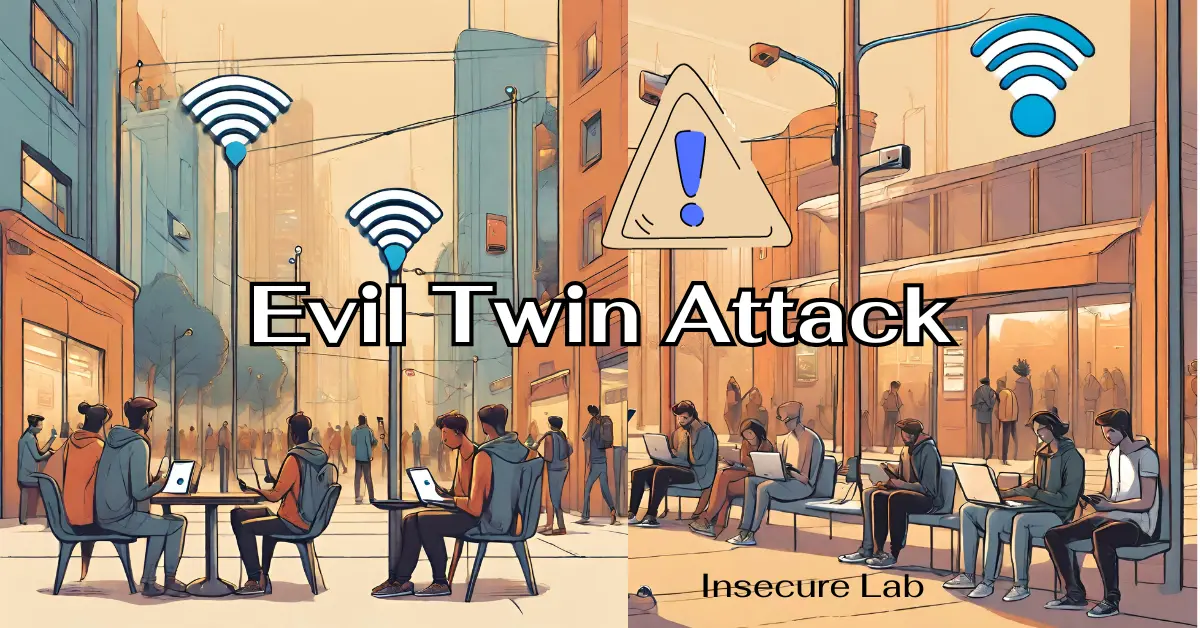🔍 Search
📥 Subscribe
Evil Twin Attack

Table of Contents
This ethical hacking guide explains what an evil twin attack is and how it works. Explore evil twin attack examples, tools and its prevention in cyber security.
What is an Evil Twin Attack?
An Evil Twin attack is a type of Wi-Fi attack where the attacker sets up a rogue Wi-Fi network that appears identical to a legitimate network. Unsuspecting users connect to this deceptive network, allowing the attacker to intercept their data, steal sensitive information, or inject malware.
This is typically done in areas with public Wi-Fi, such as cafes, airports, or hotels. The name "Evil Twin" comes from the fact that the rogue network is a malicious double of the legitimate one.
How It Works?
Example Scenario:
Imagine a coffee shop named "BeansBrew" that provides free Wi-Fi to customers under the network name "BeansBrew_WiFi_Free". An attacker sets up a rogue Wi-Fi access point nearby, naming it "BeansBrew_WiFi_Free_Official". Unsuspecting customers may connect to the attacker's network, believing it to be a legitimate network provided by the coffee shop. Once they do, the attacker can monitor all transmitted data, capture login credentials and potentially launch further attacks on their devices.
Steps Involved:
- Setup: The attacker sets up a wireless access point in close proximity to the legitimate one. The rogue access point is configured to broadcast the same SSID or a very similar SSID as the legitimate network.
- Broadcast: The evil twin network uses a stronger signal or other enticements (like no internet access restrictions) to lure users to connect to it instead of the legitimate network.
- Connection: Once a user connects to the evil twin network, all their internet traffic goes through the rogue access point.
- Interception: The attacker can use various techniques to intercept and manipulate the data passing through the network, such as sniffing, session hijacking, and man-in-the-middle attacks.
- Data Theft: Sensitive information like usernames, passwords, credit card numbers, and personal data can be stolen.
Tools and Techniques Used
Some of the most common evil twin attack tools and techniques used by malicious hackers include:
- Wi-Fi Phishing Kits: Tools like Fluxion or Wifiphisher automate the creation of evil twin networks and phishing pages to capture credentials.
- Network Sniffers: Software like Wireshark is used to monitor and record traffic passing through the network.
- Signal Boosting: High-gain antennas and signal boosters can make an evil twin network appear more powerful and attractive to devices searching for connections.
- Automated Scripts: Scripts can automate the deployment of networks and phishing pages, making it easier for attackers to set up multiple evil twins in different locations.
- SSL Stripping: Tools that force connections to revert from secure HTTPS connections to less secure HTTP, making it easier to intercept transmitted data.
- MITM Attack Tools: Tools like BetterCAP or MITMf are used for intercepting and manipulating network traffic.
- Hostapd and Dnsmasq: For more sophisticated attacks, combining hostapd (to create the AP) and dnsmasq (for DNS and DHCP services) can be used.
Prevention and Mitigation
Some of the best mitigation strategies and effective techniques to prevent evil twin attacks include:
1. Verify Network Authenticity
Always verify the legitimacy of a Wi-Fi network before connecting. Avoid networks with suspiciously similar names or those that don't require a password.
2. Use VPN
A Virtual Private Network (VPN) encrypts your internet traffic, preventing attackers from easily reading your data.
3. Avoid Sensitive Transactions
Refrain from performing sensitive operations like online banking or shopping on public Wi-Fi networks.
4. Use of HTTPS
Ensure websites use HTTPS, which encrypts data between your browser and the web server for secure communication.
Summary
An Evil Twin WiFi attack is a significant security threat, particularly in environments with public Wi-Fi access. Awareness and education, combined with technical safeguards like VPNs, updated security protocols, and regular network monitoring, are key to protecting against such attacks.
